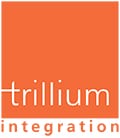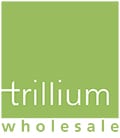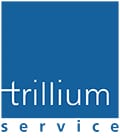One of the most significant ways new technology is changing the commercial door hardware industry is the shift from mechanical keys to keyless entry.
Rather than using a traditional key, keyless systems (also known as electronic access control or EAC) use electronic credentials, like an access card or FOB, to unlock a door.
While these EAC systems are more expensive to install, they also offer valuable features that traditional key systems cannot match.
If you’re wondering whether investing in a keyless system is the right choice for you, here are some points to consider.
Reduced Operating Costs
Over time, keyless systems tend to have lower operating costs than mechanical locks, mostly from savings in locksmith and keying fees.
For example, lost or stolen keys create a security risk, which can require expensive locksmith service to correct. If a critical key is misplaced or stolen, a facility manager may need to rekey their entire building – a major expense with significant administrative headaches and downtime. Even replacing old or worn keys and cylinders can be costly over time.
By comparison, missing access credentials can be quickly and easily deleted from the EAC system by an administrator. New credentials can be assigned on the spot with no service call or down time. Replacement cards and FOBs are also relatively cheap, particularly when compared to high security keys.
For facilities with high employee or tenant turnover, the savings can add up.
Audit Trails
A major advantage to using electronic access control systems is that access records can be audited.
The software that manages keyless systems tracks who accessed certain areas and when, which users were denied access to an area, employee’s arrival times and more. It can even send an alert when a door is left open or if there is unauthorized access.
This information, which is not available with mechanical keys, can be used to improve efficiency, investigate issues or update employee records.
Scheduling
Scheduling of locks and credentials is another benefit of keyless systems and adds flexibility to a facility’s access control.
Electronic credentials can be programmed to work on certain schedules. For example, a regular employee’s card may be authorized to unlock an entrance door only during work hours, while their manager’s card can be programmed for 24/7 access.
Credentials can also be programmed to automatically become inactive at a particular time, which is helpful for issuing temporary access for visitors or contract employees. This avoids the administrative headaches of tracking keys that are loaned out and the risk that they might not be returned.
In addition to scheduling credentials, EAC systems also allow for locks to be programmed so they unlock and lock automatically on a schedule. For example, a public entry door can be programmed to unlock in the morning and lock again at the end of the day. This saves facility managers from having to visit multiple doors to manually unlock and lock them each day.
Multiple-Use Credentials
Keyless credentials – particularly smart cards – can be used for more than just doors.
University campuses commonly use smart cards for dorm room access control, as well as for photo ID, library borrowing and as a payment system for student meal plans.
Multi-tenant dwellings and retirement communities could use cards to manage access control to residence units, mailboxes, elevator controls, parking gates, lockers, and common areas like pools or fitness centres.
Health care facilities can use cards for access to medicine cabinets, records and server racks, all using the same credential.
Not only does this eliminate the need to carry multiple keys or credentials, it also brings auditability, security and monitoring deeper into a facility. The access control system can also be programmed to trigger other resources, like video cameras or lighting systems.
Remote System Management
Most of the software that accompanies keyless systems allows administrators to make changes and updates to their system, even when they’re off site by logging in through a secure connection or app.
This can make a huge difference when unexpected situations occur. For example, if a manager is called away for an emergency, they can remotely update the EAC system to grant temporary access rights to their second-in-command, avoiding operational downtime.
Summary
While there is still a role for mechanical keys in most facilities, keyless access control systems offer several clear operational benefits that offset their higher initial costs.
These advantages can reduce the risks and costs associated with key management, provide facility managers with better security information and make it easier to manage a building’s openings.
With advice from a knowledgeable professional, facility managers can find the right balance between mechanical locks and electronic access control that suits their operational needs and budget.
If you have questions about electronic access control, keyless entry or specific applications, the specialists with Trillium Integration are ready to help. Click here to send us a message.



